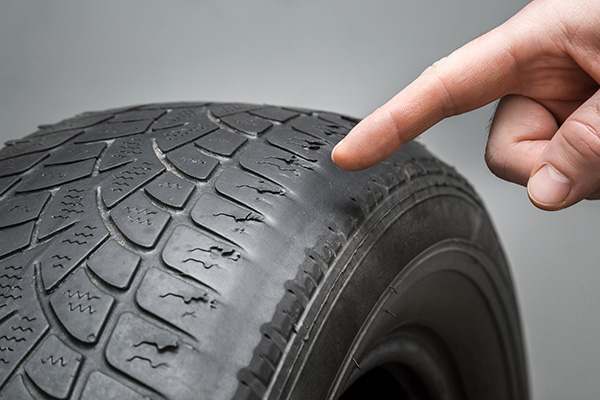
Ever looked at your tires and wondered why they don’t all wear out the same way? Uneven tire wear is one of those issues that many drivers notice but may not fully understand. It’s a sign that something isn’t quite right with your vehicle, and ignoring it can lead to bigger problems down the road—not to mention a shorter tire lifespan. So, what exactly causes tires to wear unevenly?
Misalignment
One of the most common reasons for uneven tire wear is improper alignment. When your car’s wheels aren’t aligned correctly, certain areas of the tire tread take on more pressure than others, leading to uneven wear patterns. You might notice that the edges of your tires are wearing out faster than the center or vice versa. Alignment issues often result from hitting potholes, curbs, or just regular wear and tear over time.
If your vehicle pulls to one side or you feel your steering wheel vibration at certain speeds, those are clear signs of alignment problems. Regular alignment checks can save you from premature tire wear, as well as improve your overall driving experience.
Poor Tire Inflation
Believe it or not, the amount of air in your tires plays a significant role in how evenly they wear. Underinflated tires will wear out faster on the edges, while overinflated tires will show more wear in the center of the tread. Both scenarios not only shorten the life of your tires but also reduce your car’s fuel efficiency and compromise handling.
It’s easy to forget about tire pressure, especially if your car doesn’t have a Tire Pressure Monitoring System (TPMS). However, checking your tire pressure regularly—ideally once a month—can prevent uneven wear and improve overall safety.
Worn Suspension Components
Your car’s suspension system plays a crucial role in keeping the tires in contact with the road. When components like shocks, struts, or bushings wear out, they can cause uneven weight distribution across the tires, leading to irregular wear. If your ride feels bouncy or you hear clunking sounds when driving over bumps, it’s time to have your suspension inspected.
Worn suspension parts don’t just wear your tires unevenly—they can also affect your car’s stability and handling, making it more dangerous to drive. Getting these components checked during routine maintenance will help prolong the life of your tires and keep you safe on the road.
Improper Tire Rotation
Tire rotation is another key factor in ensuring even tire wear. Because the front and rear tires experience different loads and stresses, they wear at different rates. The front tires, for example, bear the brunt of the steering and braking forces, while the rear tires generally experience less stress. If you don’t rotate your tires regularly, the front tires can wear out much faster than the rear ones.
Rotating your tires every 5,000 to 7,500 miles helps distribute the wear more evenly across all four tires, extending their lifespan and improving your car’s handling. Skipping this step can lead to irregular wear patterns and the need to replace tires much sooner than expected.
Driving Habits and Road Conditions
Your driving habits and the type of roads you frequently travel on can also have a significant impact on tire wear. Aggressive driving behaviors—like hard braking, rapid acceleration, and sharp cornering—can cause tires to wear unevenly, particularly on the outer edges. On the flip side, if you often drive on rough or unpaved roads, you may notice more rapid wear on certain areas of your tires due to the extra strain.
While it’s not always possible to control road conditions, adjusting your driving style can help reduce uneven tire wear. Slowing down, taking turns more gradually, and avoiding harsh braking can make a big difference in how long your tires last.
Faulty Wheel Bearings or Brakes
Though less common, faulty wheel bearings or brake problems can also cause uneven tire wear. If a wheel bearing is damaged or worn out, it can create excess friction, leading to increased wear on the tire. Similarly, if your brakes are not functioning properly or are dragging, one tire may wear out faster than the others.
If you notice grinding noises, vibrations, or uneven braking, it’s important to get your vehicle checked out as soon as possible. These issues can quickly lead to more serious (and expensive) problems, not to mention increased tire wear.
How to Prevent Uneven Tire Wear
Preventing uneven tire wear comes down to regular maintenance and smart driving. Here are a few tips to help you get the most out of your tires:
- Check Your Alignment Regularly: Especially after hitting a large pothole or curb, make sure your wheels are properly aligned to avoid uneven wear.
- Maintain Proper Tire Pressure: Use a tire pressure gauge to check your tires monthly and keep them inflated to the manufacturer’s recommended levels.
- Rotate Your Tires Frequently: Get your tires rotated every 5,000 to 7,500 miles to ensure even wear across all four tires.
- Inspect Suspension Components: If you notice unusual noises or a rough ride, have your suspension inspected to prevent uneven wear.
- Drive Responsibly: Avoid aggressive driving habits that put unnecessary strain on your tires and lead to premature wear.
Drive confidently, no matter the road conditions. Whether it’s alignment issues or worn suspension parts, Tom's Auto Center has the expertise to diagnose and fix the problem. Schedule your appointment now and enjoy a smoother, safer ride.